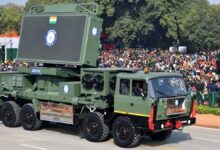List of India’s Major Defence Deals of 2024-2025

India made significant strides in strengthening its defence in 2024 by signing a series of high-risk military deals. These deals, including those across the Army, Navy, and the Air Force, are aimed at modernization, indigenization, and strategic preparedness. From the purchase of BrahMos supersonic cruise missiles to the buying of MQ-9B drones from the US, India’s defence spending is indicative of its need to maintain regional stability as well as foster indigenous manufacturing.
These agreements strengthen India’s war-fighting capacity and support the Make in India initiative by reducing reliance on foreign vendors. The article that follows provides an in-depth report on the major defence agreements of FY24-25, their significance, and how they will help strengthen the Indian military.
March 2024: Strengthening Naval and Air Capabilities
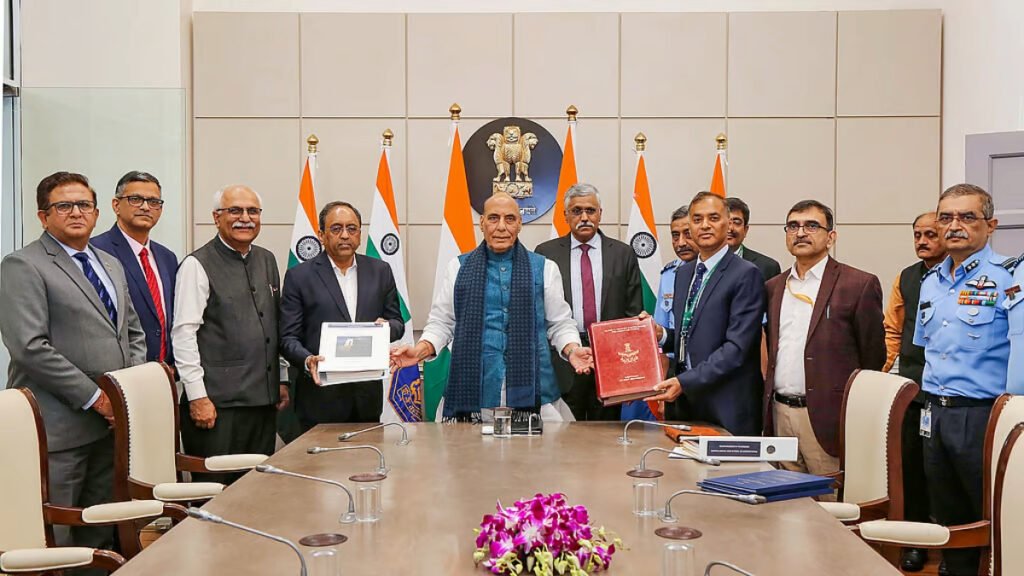
- Acquisition of BrahMos Supersonic Cruise Missiles
- Value: ₹20,506.65 crore
- Associate: BrahMos Aerospace Private Ltd (BAPL)
- The objective is to enhance the maritime strike capacity of the Indian Navy by installing these missiles on top-tier warships.
- The BrahMos missile is the world’s fastest cruise missile, with a Mach 3 speed and a range of 450 km. Under this agreement, these missiles will be fitted on Visakhapatnam-class destroyers, Talwar-class frigates, and other frontline naval warships. With the strengthening of India’s deterrence in the Indian Ocean Region (IOR), the acquisition is one of the primary reasons for dissuading threats from rival naval powers.

- RD-33 Aero Engines acquisition for MiG-29 aircraft
- Value: ₹5,249.72 crore
- Partner: Hindustan Aeronautics Limited (HAL)
- Objective: To validate and improve the operational preparedness of Indian Air Force MiG-29 fleet.
- MiG-29 fighter aircraft are powered by the RD-33 engine, which is highly manoeuvrable and enjoys air dominance. The contract keeps India’s MiG-29 squadrons combat-capable, particularly since newer aircraft such as the Tejas Mk2 and AMCA are yet to be developed.

- Purchase of Close-In Weapon Systems (CIWS)
- Value: ₹7,668.82 crore
- Partner: Larsen & Toubro (L&T)
- Purpose: To provide terminal air defence to protect military bases against low-flying aerial attacks, i.e., cruise missiles and drones.
- CIWS are rapid-response defensive systems capable of disabling enemy drones, aircraft, and missiles in a matter of seconds. The increased use of drones in modern warfare (seen in the Russia-Ukraine conflict) has made such systems a necessity for base and ship defence.
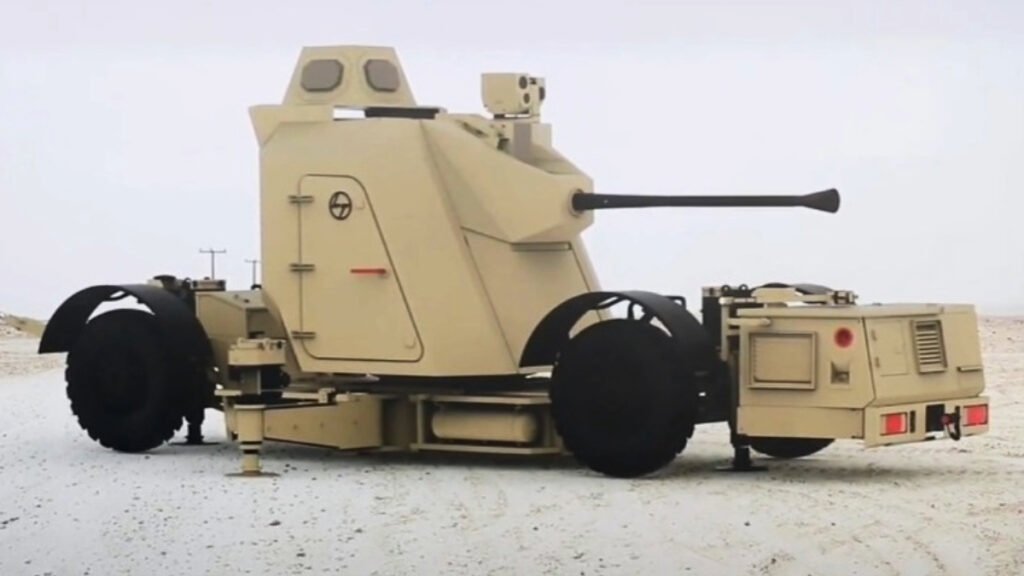
- Acquisition of High-Power Radar Systems
- Value: ₹5,700 crore
- Partner: Larsen & Toubro (L&T)
- Objective: Implement new phased-array radar systems in India’s air defence system.
- These long-range radars will enhance early warning systems, enabling the Indian Air Force to intercept arriving missiles, stealth aircraft, and drones. These radars will be essential in tracking hostile activity along the Pakistan and China borders.
These giant procurement orders worth ₹39,125 Cr were signed in the middle of India’s current border standoff with China in eastern Ladakh, and would be implemented on the broad parameters of the government’s policy to promote indigenous defence production, thereby improving indigenous capabilities, saving foreign exchange and reducing dependence on foreign origin equipment makers in the future.
September 2024: Defence Acquisition Council Clears
Total Value: ₹1,44,716 crore
- Future-Ready Combat Vehicles (FRCVs)
- Purpose: To replace the aging Indian Army’s T-72 tanks.
- Technology: Advanced next-generation main battle tanks (MBTs) with enhanced armor, firepower, and AI technology.
- Strategic Significance: Provides India land warfare advantage to neutralize any likely threat from China and Pakistan.
- Mode of Production: To be produced by strategic collaboration with Indian defence industry participants and foreign technology providers.
- The FRCV project is significant since India’s existing T-72 tanks are over four decades old. The tanks will have high mobility, night vision warfare, and anti-tank missile defence supposedly.
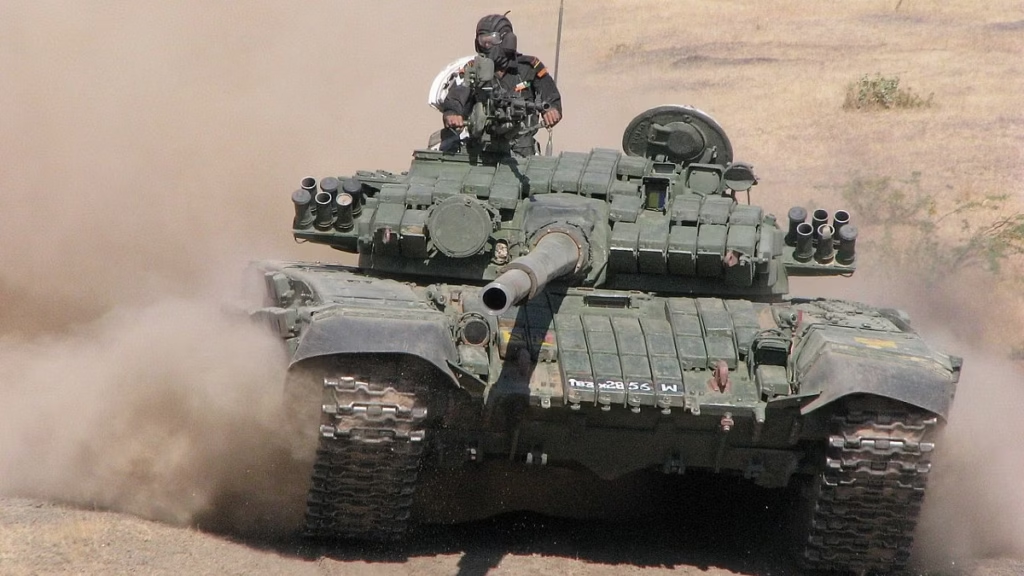
- Air Defence Fire Control Radars
- Purpose: Detection and defence against air threats, i.e., enemy aircraft, missiles, UAVs.
- Technology: Fitted with Active Electronically Scanned Array (AESA) radar to achieve increased detection range and the capability to attack multiple targets at a time.
- Deployments: Indian Army Air Defence and Indian Air Force (IAF) units. Impact: It also strengthens India’s early warning system and provides India with a multi-layered air defence. With threats increasing from spy planes and drones, these new radars will enhance India’s surveillance capability, particularly on soft borders such as Ladakh and Arunachal Pradesh.
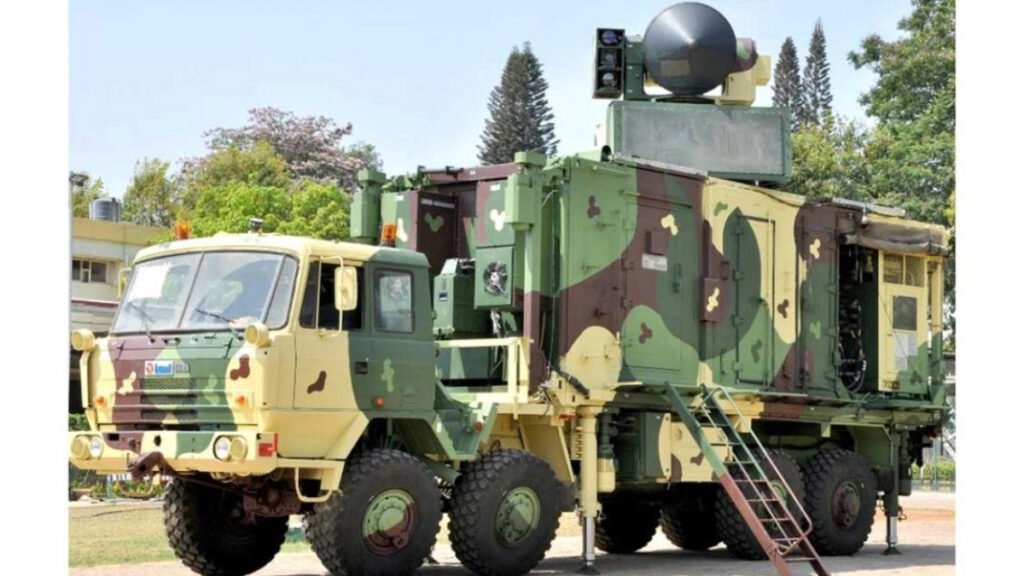
- Dornier-228 Aircraft Acquisition
- Objective: To enhance the transportation and surveillance potential of the Indian Air Force (IAF) and the Coast Guard.
- Specifications:
- Twin turboprop engines
- Short take-off and landing (STOL) capability
- Maritime surveillance radar and sensors can be fitted.
- Local Production: Manufactured by Hindustan Aeronautics Limited (HAL).
- The Dornier-228 multirole aircraft has been used in logistics, reconnaissance, and relief missions. The new aircraft will be used in coastal patrolling and the transportation of troops and vehicles to remote frontier areas.
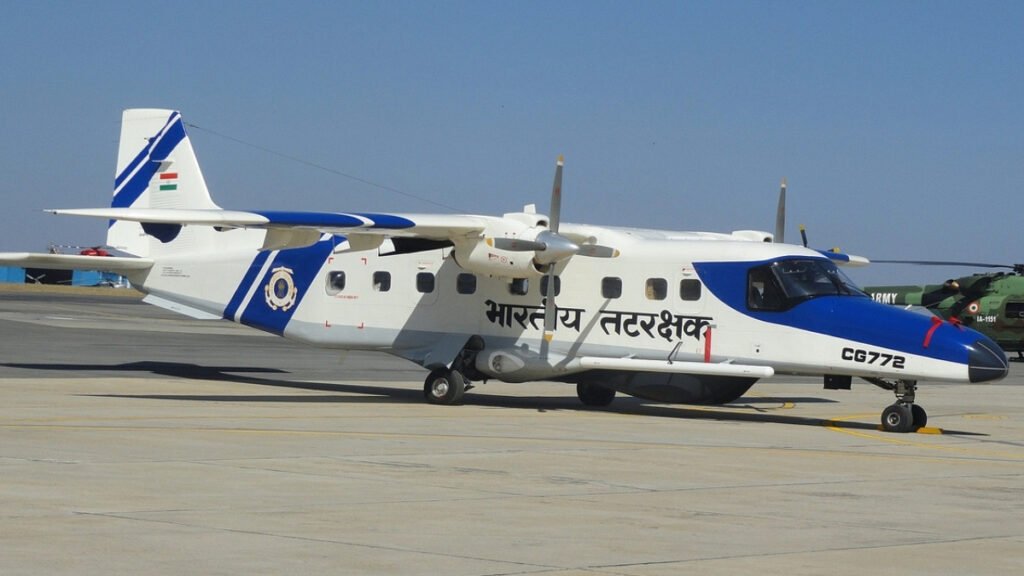
- Next-Generation Offshore Patrol and Fast Patrol Vessels
- Purpose: Enhancing coastal defence, anti-piracy missions, and naval security.
- Major Features:
- Improved speed to allow high-speed intercept
- Increased endurance for extended patrols
- More sophisticated combat weapons and combat readiness sensors
- Operators: Indian Coast Guard and Navy
- These vessels will be used mainly to counter sea threats such as piracy, terrorism, and illegal fishing operations, for patrol duty as well as search & rescue in the Indian Ocean Region (IOR). These approvals are a major push towards indigenization and witness India’s defence establishments equip themselves with high-tech equipment to match technology with global powers.
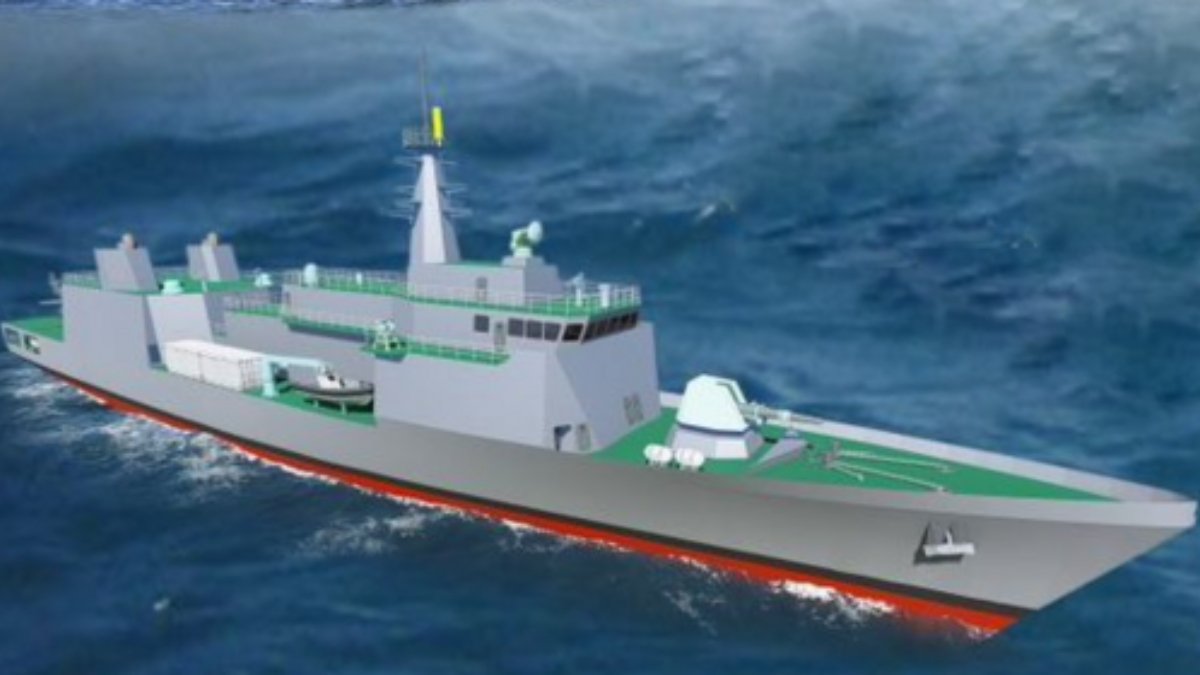
- 240 AL-31FP Engine Procurement for Su-30MKI Fighter Aircraft
- Value: ₹26,000 crores
- Partner: Hindustan Aeronautics Limited (HAL)
- Objective: Induct the IAF’s Su-30MKI fleet into combat operations and upgrade it by replacing existing engines with AL-31FP engines. The engines will be made at HAL’s Koraput factory which will supply them at the rate of 30 engines per year for 8 years.
- With the level of indigenization estimated at 63%, this contract supports the defence manufacturing capacity of India by involving MSMEs and other Indian industries under the ‘Aatmanirbhar Bharat’ initiative. The agreement guarantees the long-term serviceability and combat worthiness of the IAF’s most potent fighter platform, further enhancing India’s air combat superiority.

October 2024: Increased Air and Intelligence Capabilities
- MQ-9B Sky/Sea Guardian RPAS Acquisition
- Value: $4 billion
- Partner: General Atomics (USA)
- Objective: Enhance monitoring and surveillance in the Indian Ocean Region (IOR).
- India has procured 31 MQ-9B drones under a contract, which will provide real-time intelligence as well as precision-strike capability. They are to be deployed across the IAF, Indian Navy, and Indian Army and will significantly boost India’s sea and border surveillance capabilities.
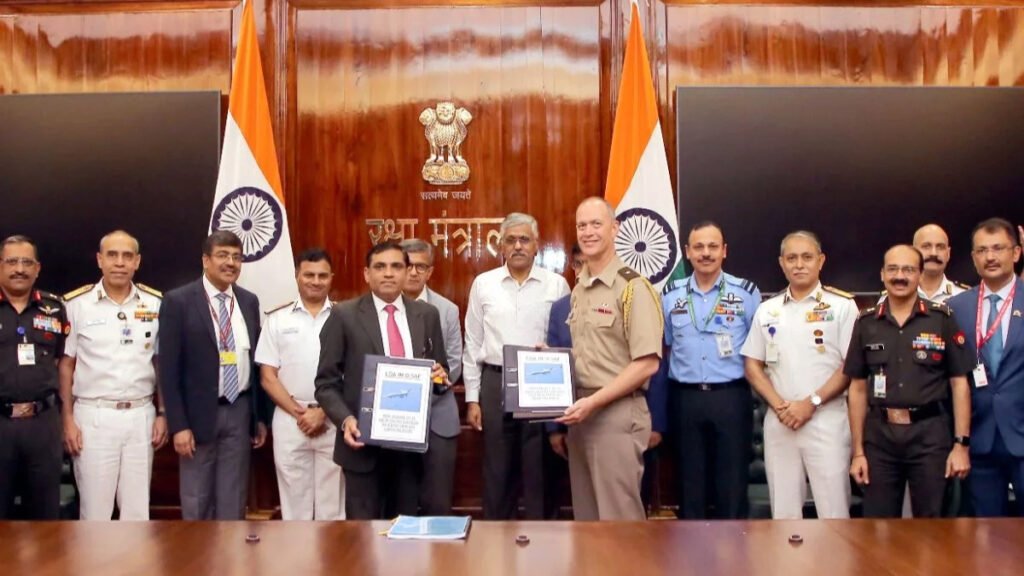
- Airbus C295 Military Aircraft Manufacturing in India
- Value: €2.5 billion
- Partner: Airbus & Tata Group
- Mission: Establish an Indian environment for private production of warplanes.
- What makes the C295 important to India?
- Restoring the Aging Avro-748 Fleet
- IAF’s Avro-748 planes, which were inducted in the 1960s, are obsolescent and becoming more costly to maintain.
- The C295 aircraft offers better fuel efficiency, greater range, and state-of-the-art avionics.
- Enhanced Logistics and Relief Response
- The C295 can operate from short and unsurfaced runways, hence proving to be appropriate for high-altitude and distant regions like Ladakh and the Northeast.
- The plane will be an integral part of natural disaster relief missions including flood relief, medical evacuation, and emergency supply drops.
- Restoring the Aging Avro-748 Fleet
- The programme will have 56 C295 transport planes manufactured in Gujarat, a significant step towards decreasing dependence on foreign military imports enhancing the IAF’s logistics and troop transport capability.
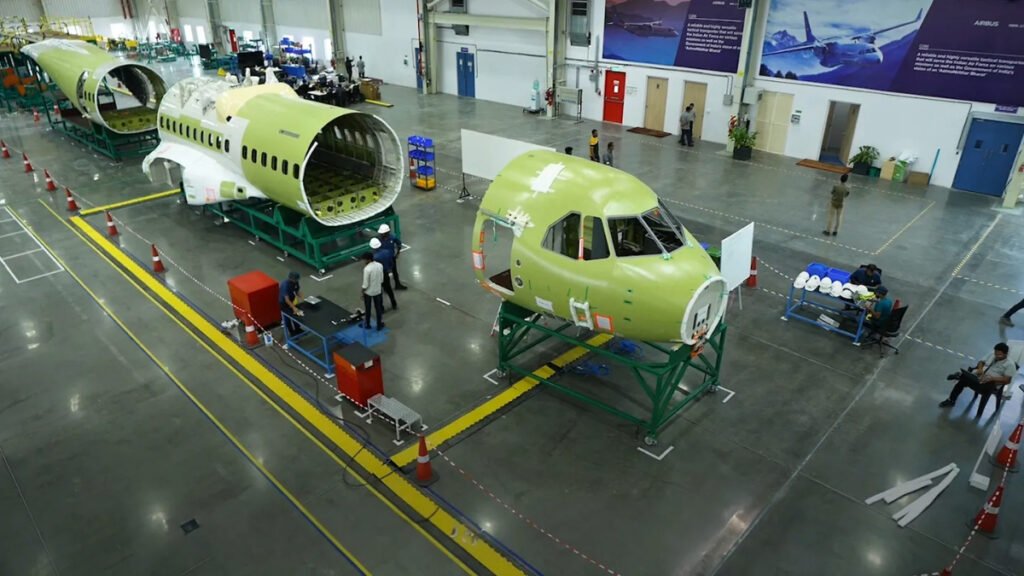
December 2024:
- Expansion of Fighter Jet Fleet: Acquisition of Su-30MKI Fighter Aircraft
- Price: ₹13,500 crore
- Collaborator: Hindustan Aeronautics Limited (HAL)
- Objective: Enhance IAF’s air combat capability by 12 more Su-30MKI fighter jets.
- Why does this matter?
- Su-30MKI is the IAF workhorse with high manoeuvrability, long-range attack capability, and compatibility with advanced weapons. The new generation of fighters will:
- Maintain air supremacy until induction of new-generation planes (AMCA, Rafale-M).
- Encourage indigenous defence manufacturing, with HAL manufacturing them under license.
- Enhance operational readiness amid growing regional security challenges.
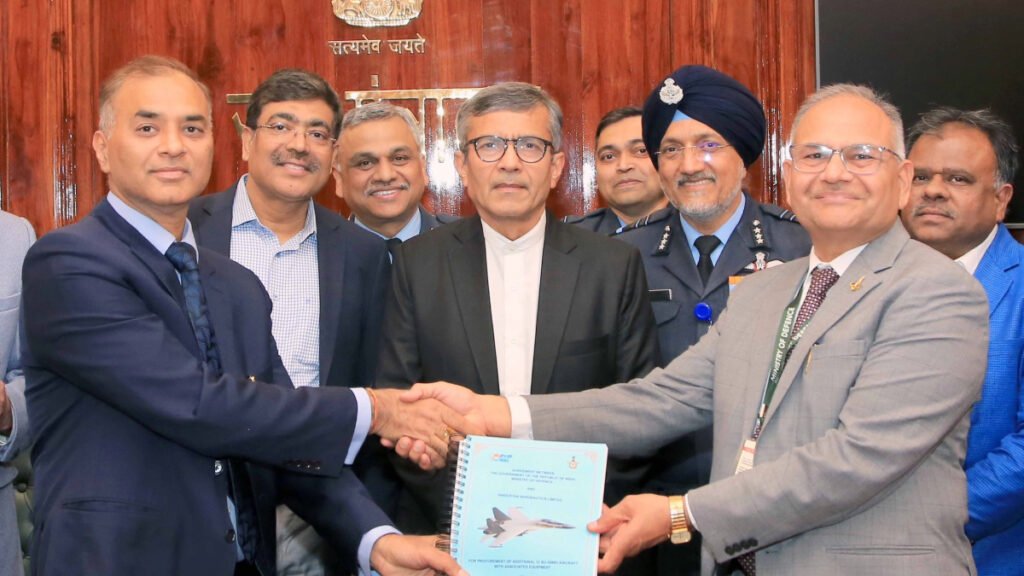
- Expanded Artillery Capabilities: Procurement of More K9 Vajra-T Howitzers
- Value: ₹9,600 crore
- Associate: Larsen & Toubro Limited
- Objective: Integrate mobile guns into the Indian Army via upgraded self-propelled guns.
- India added the purchase of 100 more K9 Vajra-T howitzers on December 20, 2024, to augment India’s long-range firepower and speed-of-delivery artillery capability. A variant of South Korea’s K9 Thunder, the Vajra-T has been designed particularly for Indian terrain and is already being used in critical strategic locations in India.
- Key Features and Benefits
- 155mm/52-calibre gun with a range of up to 40 km.
- Tracked platform with high mobility over challenging terrain.
- Indigenized and adapted to operate in deserts and highland areas.
- Established performance in regions such as Ladakh and Rajasthan.
- Strategic Significance
- Increases the existing fleet of 100 Vajra vehicles.
- Developing artillery capabilities along exposed borders.
- Increased rapid-deployment firepower in multi-front operations.
- Deliveries will be finished by end of 2025 to enable timely support to India’s artillery modernization plans.
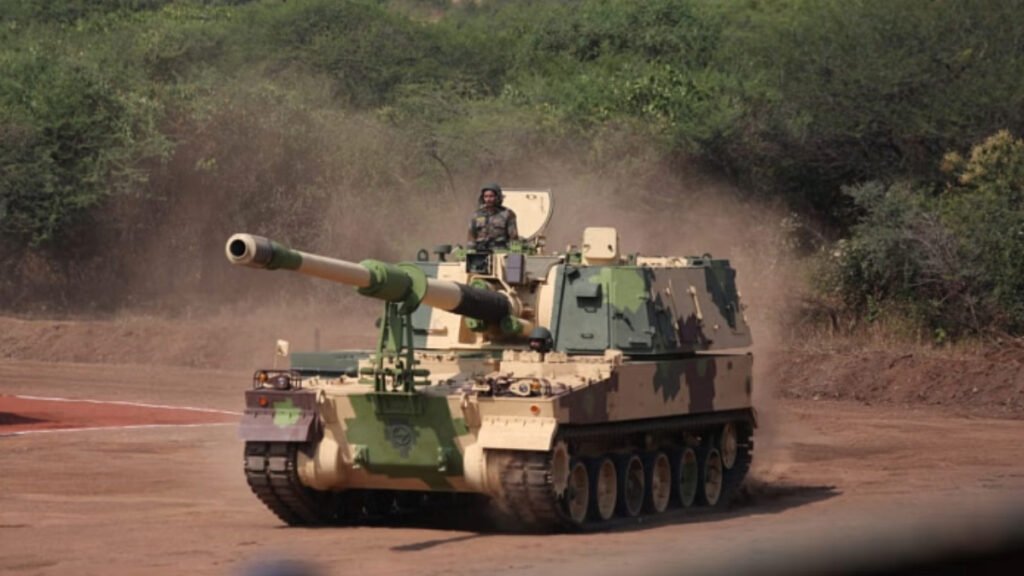
January 2025: Creating Rocket Artillery Systems
- Pinaka Rocket System Acquisition
- Valuation: ₹10,000+ crore.
- The partners include Economic Explosives Ltd. (EEL) and Munitions India Limited (MIL).
- Objective: Increase the Indian Army’s long-range precision strike capability using sophisticated rocket technology.
- Two contracts were inked for manufacturing Pinaka Area Denial Munition Type 1 and High Explosive Pre Fragmented Mk-1 (Enhanced) rockets. The systems are meant for rapid deployment and saturation attacks, and hence for large-scale battlefield support. The upgraded rockets possess better accuracy, range (up to 75 km in new models), and killing capacity.
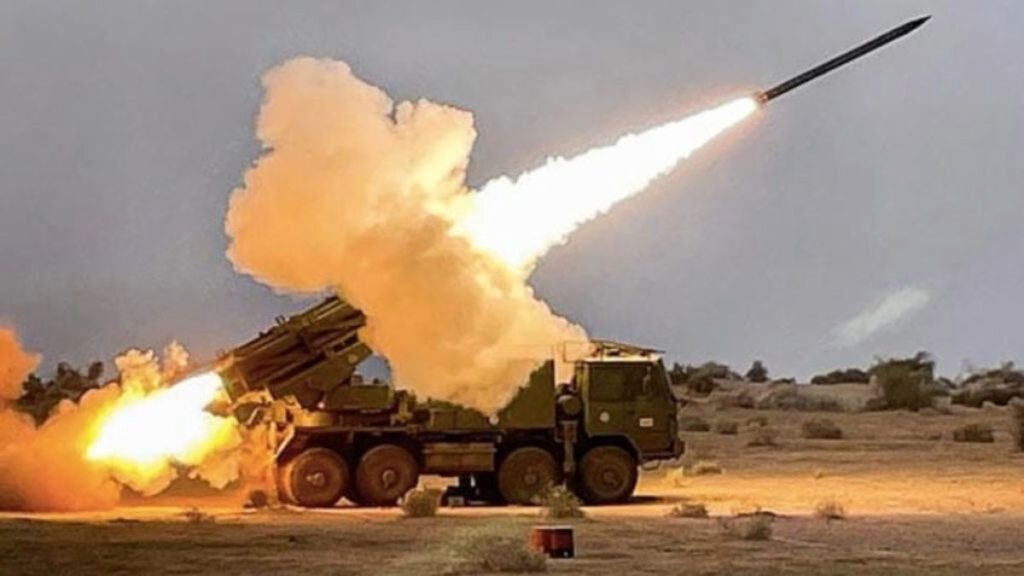
March 2025:
- Air Combat and Close Support Expansion: Procurement of Light Combat Helicopters (LCH) Prachand
- Worth: ₹62,700+ crore ($7.33 billion roughly)
- Partner: Hindustan Aeronautics Limited (HAL)
- Objective: Modernize the IAF and Army with responsive, locally made attack helicopters.
- A landmark agreement was signed to induct 156 LCH Prachand helicopters, India’s first indigenously produced dedicated light combat helicopters for high altitudes, particularly for Ladakh and Northeast. It is equipped with air-to-air missiles, anti-tank guided missiles, rocket pods, and a 20mm turret gun. The Army and IAF variants are included in the contract and are a milestone in indigenous production of rotorcraft.
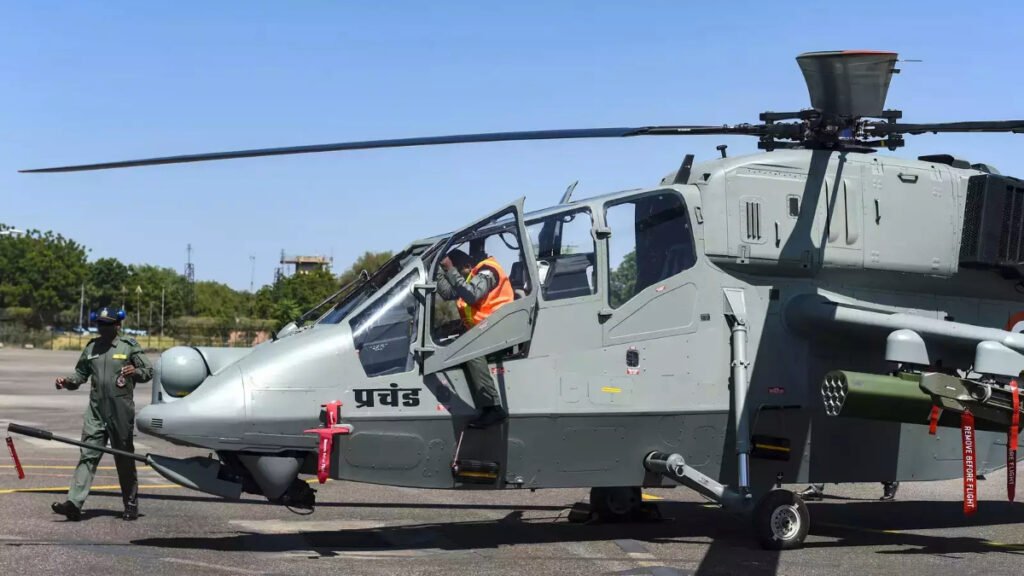
- Development of Armoured Forces: Acquisition of Advanced Tank Engines
- Value: $248 million
- Partner: Rosoboronexport (Russia)
- Objective: Engine upgrade for Indian Army’s T-72 and T-90 main battle tanks.
- India has signed an agreement with Russia for the supply of 1,000-horsepower engines to modernize aged powerplants in T-72 tanks. The Defence Acquisition Council (DAC) also gave the go-ahead for the acquisition of new 1,350 horsepower engines which will replace the current older 1,000 horsepower engines in the T-90 tanks. The deal includes technology transfer, and the engines are to be license-produced in India, possibly in partnership with BHEL. These engines will significantly improve mobility, speed, acceleration and battlefield survivability on the battlefield for older T-72 and T-90 tanks. It is an armoured modernization program to provide armoured capability until the indigenous tanks are produced.
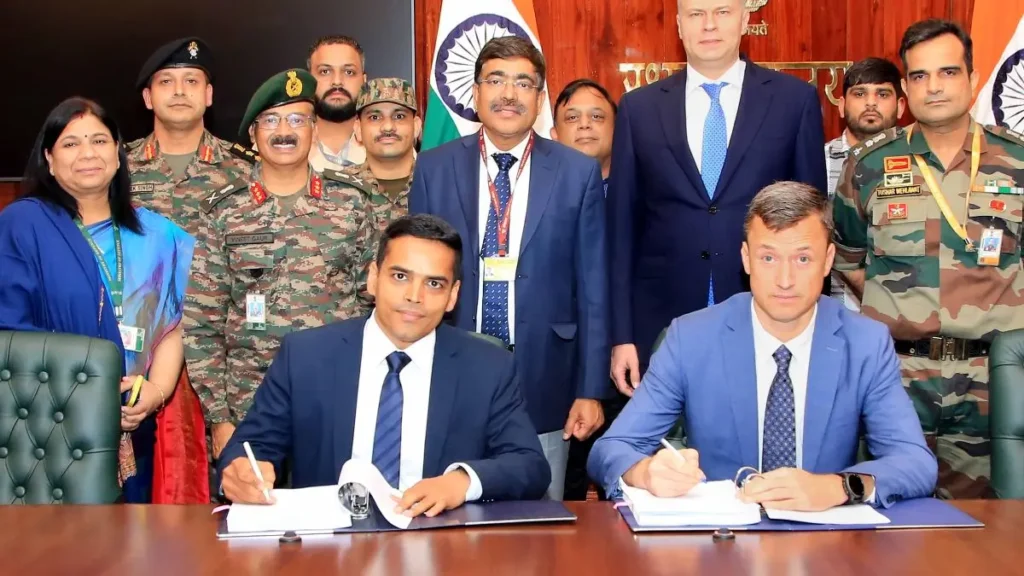
- Upgrading Artillery Capabilities with Indigenous Firepower: The Advanced Towed Artillery Gun Systems (ATAGS)
- Value: ₹6,900 crore
- Partner: Bharat Forge Limited (Kalyani Group)
- Purpose: Arm the Indian Army with new, locally manufactured towed artillery guns to serve the battles more effectively
- On 26 March 2025, India signed a big contract to purchase 307 ATAGS (155mm/52-calibre) guns. They are among the finest artillery systems in the world, produced with the assistance of DRDO and the private sector. ATAGS can fire up to 48 km, are in automatic control, and are highly accurate. They are therefore suited for battle in open land and on high ground.
- This deal is a significant fillip to the ‘Make in India’ initiative. It will reduce dependence on foreign guns and help the Army’s firepower in the vicinity of sensitive borders.
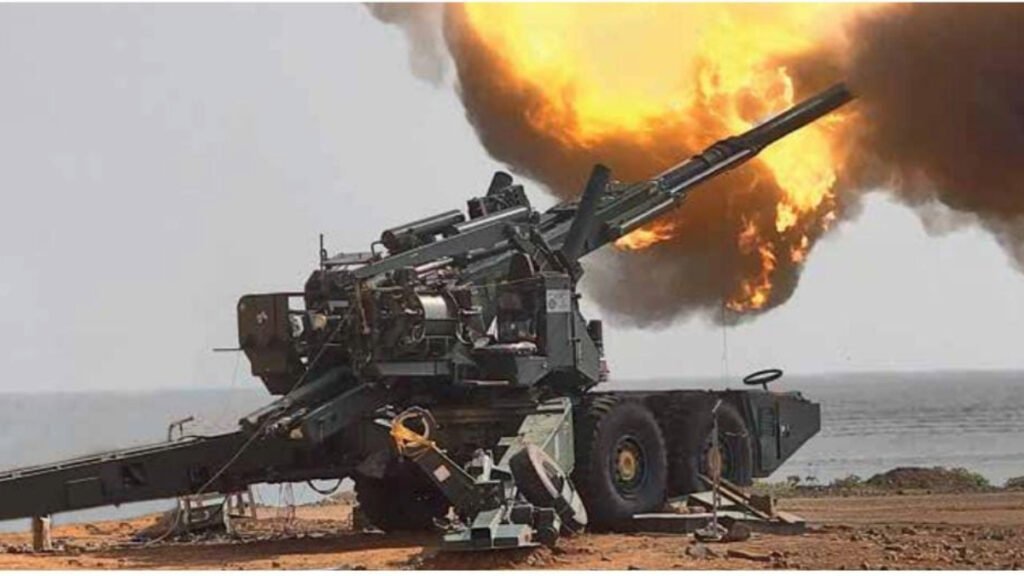
- Upping the Anti-Submarine Warfare: Purchase of Varunastra Heavyweight Torpedoes
- Value: Not a disclosed contract value
- Partner: Bharat Dynamics Limited (BDL)
- Aim: Enhance the Indian Navy’s capability to attack submarines with heavyweight Indian-manufactured torpedoes.
- On March 20, 2025, Defence Acquisition Council (DAC) sanctioned the purchase of Varunastra torpedoes. They were produced by the Naval Science and Technological Laboratory (NSTL).
- The Varunastra is an electrically powered ship-launched torpedo that is fitted with sophisticated autonomous guidance software and GPS/NavIC-based homing. It is around 1.5 tonnes in weight, has a 250 kg high explosive warhead, and can have a strike range of up to 40 kilometers at more than 40 knots (74 km/h). The induction of the torpedoes will significantly enhance the Navy’s capability to defend against submarine threats.
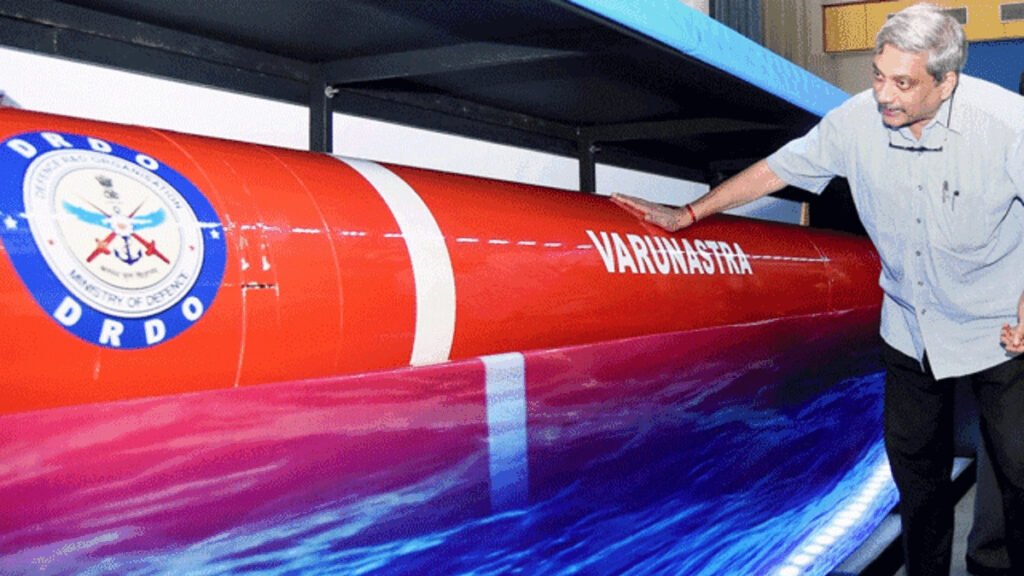
- Shifting Anti-Tank Combat Capabilities with Nag Missile System (NAMIS)
- Value: ₹1,801.34 crores
- Joint venture: Armoured Vehicle Nigam Limited (AVNL)
- Goal: To provide the Indian Army mechanized infantry with indigenous, state-of-the-art anti-tank guided missile systems to maintain operational effectiveness against hostile armour.
- On 27 March 2025, the Ministry of Defence entered into a contract with Armoured Vehicle Nigam Limited (AVNL) for the acquisition of the Nag Missile System (NAMIS) Tracked version which includes the 13 NAMICA (Nag Missile Carrier) and 293 Nag missiles. The missiles can hit their targets with accuracy without further guidance.
- The NAMIS has been created by the Defence Research and Development Laboratory of the DRDO. It has advanced sighting systems and can function in different types of terrain which gives it a substantial advantage in mechanized operations.
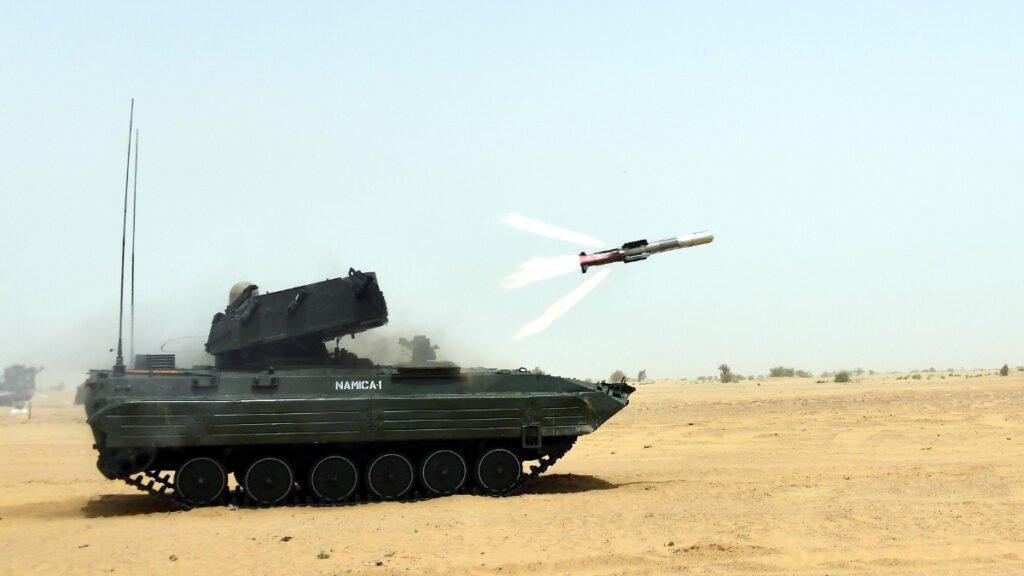
- Improving Mobility with Local Light Vehicles buying 5,000 Light Specialist Vehicles (LSVs)
- Value: As part of a full-fledged defence package of ₹2,500 crore
- Partners: Force Motors Limited and Mahindra & Mahindra Limited
- Objective: To equip the Indian Army with sophisticated, locally produced light vehicles to enhance their mobility across various terrains.
- On 27 March 2025, the Ministry of Defence signed contracts with Force Motors Limited and Mahindra & Mahindra Limited to purchase approximately 5,000 Light Specialist Vehicles (LSVs) which can operate in harsh ground conditions. They have a capacity of 800 kg and are designed to replace old utility vehicles in the army fleet.
- The procurement supports the ‘Aatmanirbhar Bharat’ initiative, which focuses on making defence products in India and strengthening the country’s defence abilities.
Conclusion: India’s Defence Industry Year of Change
India’s defence acquisitions in FY 2024–25 are a balanced mix of foreign procurement and indigenous development, a major step towards technology upgradation and self-reliance. The deals address pressing military requirements of all three defence forces (Navy, Air Force, and Army):
- Naval Deterrent: Strengthened with the acquisition of the BrahMos supersonic cruise missiles and the projected submarine construction contract with Spain under Project-75I.
- Air Power Upgrade: It comprises the procurement of Su-30MKI fighter aircraft, MiG-29 RD-33 engines, and MQ-9B unmanned combat air vehicles (UCAVs). It also comprises the induction of Light Combat Helicopters (Prachand) for enhancing tactical air operations.
- Independent Production & Indigenization: Manufacturing programs of C295 aircraft, Close-In Weapon Systems (CIWS), and K9 Vajra-T howitzers are one of the main thrusts in developing Indian capability across the board.
- Firepower and Battlefield Support: Augmented by the addition of the Pinaka rocket launcher, new tank engines for T-72s and T-90s, NAMIS, and ATAGS.
- Improved Monitoring & Air Defence: India is augmenting its vigilance and response through the purchase of robust radars, Air Defence Fire Control Radars, and long-range drones.
Against the backdrop of growing Chinese and Pakistani threats, these acquisitions make India’s military technologically equipped and combat-capable. Simultaneously, the reliance on Make in India and technology transfer reflects a serious intent to transform India into a global defence manufacturing hub and exporter.




